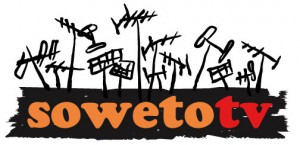 Together with Tsepo Thafeng and Jerry Ramaboa, I founded the first free-to-air, community television station in Soweto.
Together with Tsepo Thafeng and Jerry Ramaboa, I founded the first free-to-air, community television station in Soweto.
Against all odds, we managed to obtain a month-long Special Event Broadcast License. We installed a TV studio in the Dobsonville Shopping Centre (in a space recently vacated by a bank). We used outdated OB sports gear borrowed from the SABC sports department. We set up a microwave beam to the SABC tower, firing up the old Bop TV transmitter that had just been sitting dormant, collecting dust for over a decade. And for a glorious month, our group of 100 plus volunteers made super-low-budget TV. The experience, I am sure, changed all of our lives.
Half our volunteers were young people from Soweto and the other half were African TV and media students from every school in the city.
We mostly made live-to-air talk-show-style TV. We had three studio cameras and two red couches. Personally, my favorite two shows were the ones for small children. The first was a no-voice-over POV show of daily life in a crèche, the camera people on their knees the whole time. The other show invited toddlers into the studio to sing songs and play games on live TV.
And we sold ads. By the end of that month we were actually able to pay off our bills and break even. It helped that the space in was donated and the equipment was loaned. But the microwave link was expensive. And we had lots of other operating costs.
I figured out early that my volunteers couldn’t make TV for free. But for 100 rands ($20) per hour – to cover cell phone airtime and transport – they could actually do some brilliant work.
We rented four Mac computers, but we couldn’t ever manage to get the video footage off the cameras onto the computers and then off again to tape. For the first three weeks one benighted production team tried and tried and came up with nothing. Luckily I had lots of other people who figured out how to shoot-to-tape so that editing wasn’t necessary – our process echoed the origins of video production in the US in the late 60s when Sony’s first portable video recorders came out several years before any compatible editing suite.
This was a proof of concept. The Broadcast Act of 1993 had endorsed the idea of community TV and provided the possibility of a viable revenue stream (unlike in the US) by allowing for ads more or less on par with commercial TV, but no community had ever translated that potential into a viable business model. We demonstrated that community TV in Soweto could work. Soweto has never looked back.
Check out Soweto TV.
